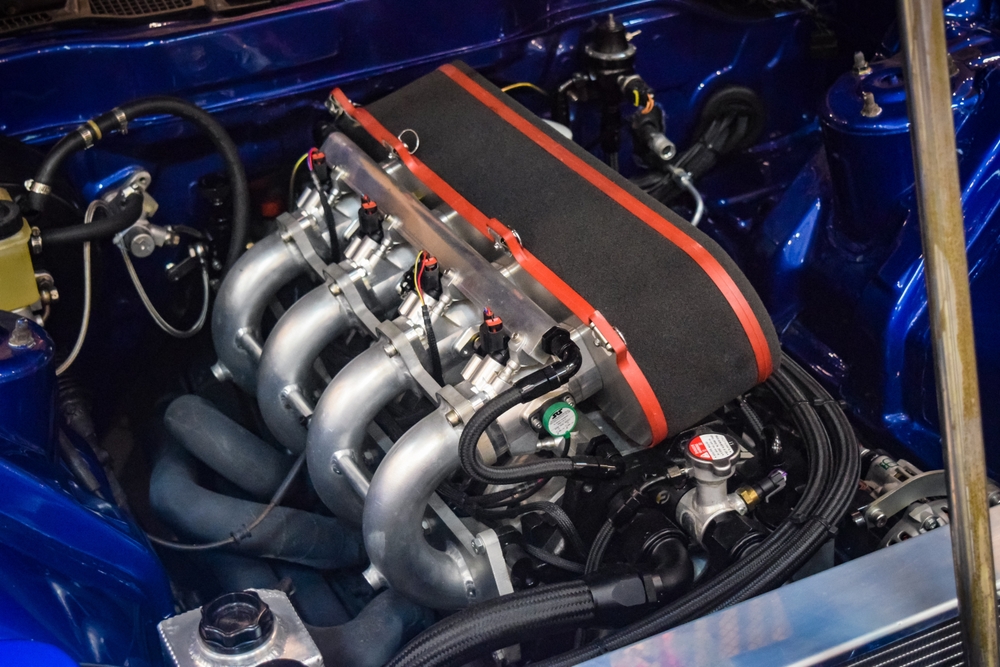Synthetic Shift: The Dawn of Programmable Transmissions
The world of automotive engineering is on the brink of a revolutionary leap forward. Imagine a car that can adapt its transmission behavior on the fly, optimizing performance, efficiency, and driving experience in real-time. This isn't science fiction; it's the emerging reality of programmable transmissions. As we stand at the cusp of this transformative technology, let's dive into the intricate world of synthetic shifting and explore how it's set to redefine our relationship with the road.

Decoding Programmable Transmissions
At its core, a programmable transmission is a sophisticated mechatronic system that combines advanced mechanical components with cutting-edge software. Unlike conventional transmissions, which rely on predetermined shift points, programmable transmissions use real-time data from various vehicle sensors to make intelligent shifting decisions. This data includes factors such as engine load, vehicle speed, road conditions, and even driver behavior.
The Synthetic Shift Experience
Driving a vehicle equipped with a programmable transmission is a revelation. The system can seamlessly transition between different driving modes, each with its unique shift pattern. In sport mode, it might hold gears longer and downshift more aggressively, providing a thrilling experience for enthusiasts. Switch to eco mode, and the transmission adapts to prioritize fuel efficiency, shifting earlier and avoiding unnecessary gear changes.
Beyond Performance: Safety and Efficiency
Programmable transmissions offer benefits that extend far beyond performance enhancements. By analyzing road conditions and anticipating changes in terrain, these systems can preemptively adjust gear ratios to maintain optimal traction and stability. This proactive approach to transmission control can significantly improve vehicle safety, especially in challenging driving conditions.
The Role of Artificial Intelligence
The true potential of programmable transmissions lies in their ability to learn and adapt over time. By incorporating artificial intelligence and machine learning algorithms, these systems can analyze driving patterns and preferences to create personalized shifting strategies for individual drivers. This level of customization was previously unthinkable in automotive transmissions and represents a paradigm shift in how we interact with our vehicles.
Overcoming Technical Hurdles
Developing programmable transmissions presents significant engineering challenges. One of the primary obstacles is creating software robust enough to handle the complex, real-time decision-making required for optimal gear selection. Engineers must also consider the increased wear on mechanical components due to more frequent shifting and ensure that the system remains reliable over the vehicle’s lifetime.
The Future of Driving Dynamics
As programmable transmissions become more advanced, we can expect to see even greater integration with other vehicle systems. Imagine a car that not only optimizes its transmission based on current conditions but also coordinates with adaptive suspension, steering, and power delivery systems to create a holistic driving experience tailored to each specific moment on the road.
Industry Adoption and Consumer Impact
Major automotive manufacturers are already investing heavily in programmable transmission technology. While initially limited to high-end vehicles, the technology is expected to trickle down to more affordable models in the coming years. For consumers, this means access to vehicles that offer unprecedented levels of customization and adaptability, potentially changing the way we think about car ownership and driving preferences.
Regulatory Considerations
The advent of programmable transmissions raises interesting questions from a regulatory standpoint. How will these systems be tested and certified? Will there be standardization across manufacturers? Regulatory bodies will need to develop new frameworks to ensure that these advanced transmissions meet safety and emissions standards while still allowing for the flexibility that makes them so innovative.
Conclusion: A Shift in Perspective
Programmable transmissions represent more than just a technological advancement; they symbolize a fundamental shift in how we conceive the relationship between driver, vehicle, and road. As this technology continues to evolve, it promises to deliver a driving experience that is more efficient, more enjoyable, and more attuned to individual needs than ever before. The synthetic shift is here, and it’s set to transform the automotive landscape in ways we’re only beginning to imagine.





